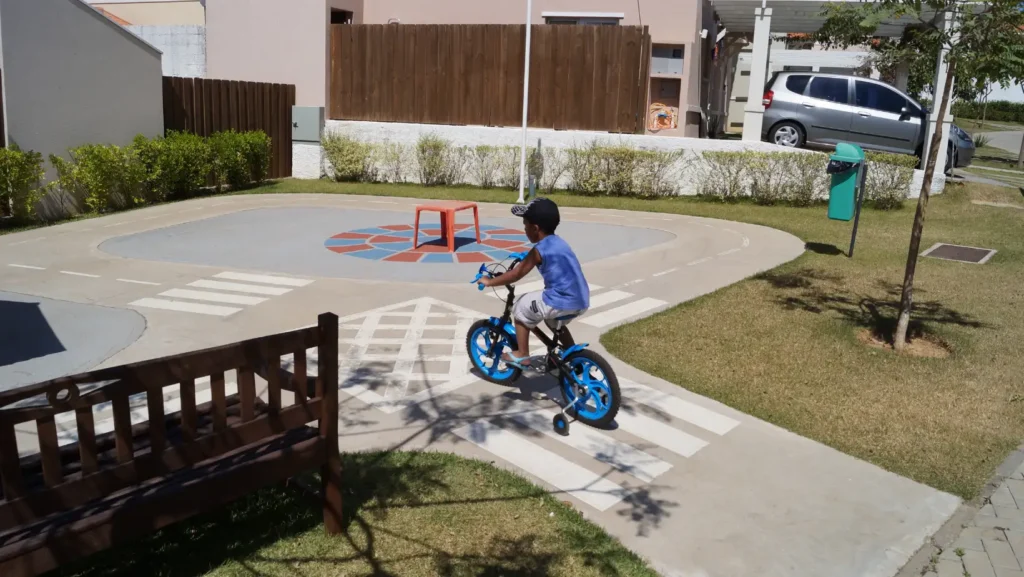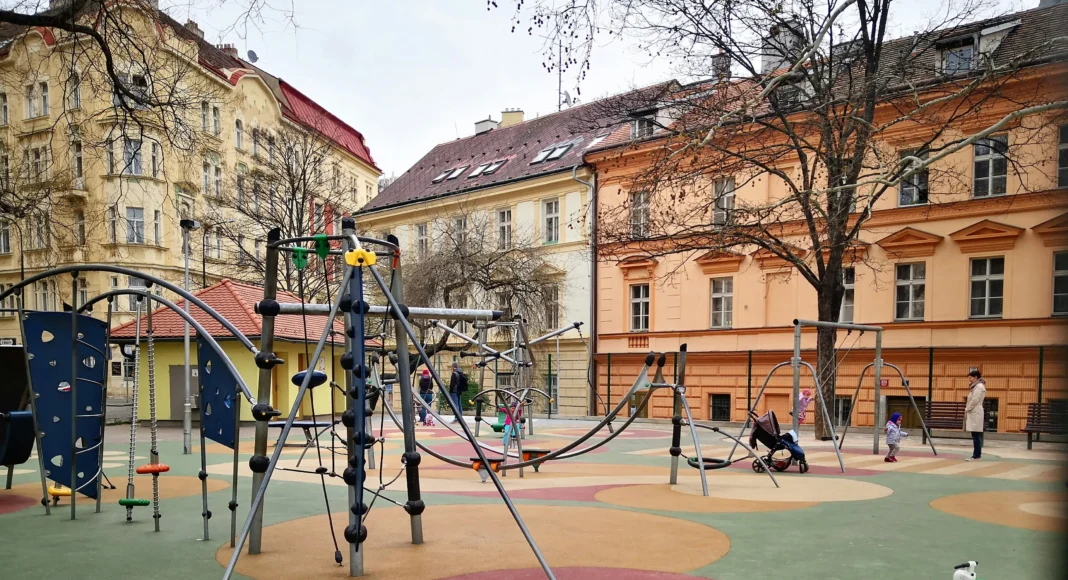Urban environments have traditionally been designed with an emphasis on economic growth, transportation efficiency, and real estate development, often overlooking the needs of children. Child-friendly cities prioritize safe, accessible, and engaging spaces that support children’s cognitive, physical, and social development. Unlike conventional urban planning strategies that focus on vehicular traffic, high-density infrastructure, and commercial viability, child-friendly cities integrate play areas, pedestrian-friendly pathways, and community-driven designs to create inclusive environments.
Traditional city planning often neglects elements like safe crossings, green spaces, and interactive play zones, making it difficult for children to explore their surroundings independently. As cities continue to grow, the demand for holistic urban planning that prioritizes the well-being of children becomes increasingly critical. By shifting the urban paradigm to a more child-centric model, cities can foster healthier, more livable environments that benefit all residents.
Urban environments significantly shape children’s development, social interactions, and overall well-being. Designing cities that prioritize the needs of their youngest residents ensures healthier, safer, and more supportive communities. However, many cities worldwide still prioritize vehicular traffic and commercial interests over safe, inclusive public spaces for children. A truly livable city must integrate child-friendly design elements into its planning framework.
This article explores a framework for child-friendly urban spaces, highlighting global best practices, verified case studies, and the contributions of organizations promoting urban environments that prioritize children. Additionally, a refined indicator framework, based on Spatial Logics’ expertise, is proposed for measuring child-friendly urban design in both developing and developed world contexts.
Principles of Child-Friendly Urban Spaces
A child-friendly city is designed to support children’s physical, cognitive, and social development. Its key principles include:
- Safety: Reducing traffic dangers, improving pedestrian infrastructure, and ensuring crime-free public spaces.
- Accessibility: Walkable neighborhoods with inclusive, barrier-free infrastructure suitable for children of all abilities.
- Playfulness: Open and interactive spaces that encourage movement, exploration, and creativity.
- Independence: Infrastructure that allows children to navigate their surroundings safely and independently.
- Community Integration: Designing intergenerational spaces that foster connections among children, families, and the broader community.

Best Practices in Designing Child-Friendly Cities
- Eindhoven, Netherlands – Implementing Child-Friendly Urban Design
Eindhoven has adopted planning strategies that place children at the center of urban design. The city integrates child-friendly mobility, play spaces, and safe routes to school, ensuring that public spaces cater to young residents.
2. Showcasing Global Examples of Child-Friendly Urban Design
Various cities worldwide have implemented innovative child-centric urban planning. The integration of safe pedestrian pathways, interactive playgrounds, and car-free zones has contributed to safer, more engaging cities for children.
3. UNICEF Switzerland and Liechtenstein Case Studies – Child-Friendly Living Spaces
UNICEF Switzerland and Liechtenstein have documented case studies on child-friendly living spaces, focusing on urban environments designed to support children’s well-being. These studies highlight innovative approaches in urban planning that create safe, engaging, and inclusive spaces for children.
4. Collection of Best Practices Among Child-Friendly Cities
This report by the Bernard van Leer Foundation compiles best practices from cities that have successfully integrated child-friendly urban design. It provides recommendations for urban planners and policymakers.
5. Playful Learning Landscapes: Enhancing Child-Friendly Urban Design
The Brookings Institution presents a framework assessing the impact of Playful Learning Landscapes on child development and urban design. The study demonstrates how integrating play into urban planning benefits children’s learning and well-being.

The Role of Spatial Logics in Child-Friendly Urban Design
Spatial Logics is at the forefront of child-centered urban planning. Through research, advocacy, and design interventions, the firm contributes to developing inclusive environments where children thrive. Some of its key initiatives include:
1. Safe and Walkable Communities
Spatial Logics promotes pedestrian-friendly urban grids, traffic-calming measures, and protected bike lanes to enhance safety for children traveling to schools, parks, and community spaces.
2. Child-Centric Placemaking
By repurposing underutilized urban areas into interactive play spaces, Spatial Logics ensures that children have access to safe and engaging environments within city centers and residential neighborhoods.
3. Participatory Urban Planning
Spatial Logics actively involves children and their caregivers in urban planning processes through workshops, surveys, and community engagement sessions to ensure that their voices shape the built environment.
4. Technology Integration for Safety
Leveraging smart city technology, Spatial Logics integrates geofencing applications, real-time traffic monitoring, and smart crosswalks to improve safety and mobility for children in urban settings.

Proposed Indicator Framework for Measuring Child-Friendly City Design
Drawing on insights from Brookings Institution’s Playful Learning Landscapes framework and Spatial Logics’ expertise in urban design, we propose a more adaptable and scalable indicator framework to measure a city’s child-friendliness across different socio-economic and infrastructural contexts.
| Core Domain | Indicators for Measurement | Ideal Standards (Developed Cities) | Adaptive Standards (Developing Cities) |
| Mobility and Accessibility | Percentage of pedestrianized streets and child-friendly crossings | ≥ 50% | ≥ 30% |
| Density and connectivity of safe cycling lanes | 2+ km of dedicated lanes per km² | 1+ km of shared lanes per km² | |
| Proximity of essential services (schools, playgrounds, libraries) within a 500m buffer (developing cities) or within a 10-minute walking distance (developed cities) | 90% of residential areas covered | 70% of residential areas covered | |
| Safety and Security | Number of traffic-calming measures near schools and residential areas | ≥ 3 per 100m of school zones | ≥ 2 per 100m of school zones |
| Crime rate and perception of safety in public spaces used by children | Low crime index (<30) | Moderate crime index (<50) | |
| Presence of child-friendly lighting and surveillance in play areas | 100% of play areas lit | 70% of play areas lit | |
| Play and Learning Environments | Ratio of green and play spaces per capita | 20m² per child | 10m² per child |
| Integration of interactive urban elements that encourage cognitive development | Public play installations every 500m | Public play spaces every 1km | |
| Inclusivity of play spaces catering to children with disabilities | ≥ 80% of play areas accessible | ≥ 50% of play areas accessible | |
| Community Engagement and Governance | Presence of child-focused participatory urban planning initiatives | Citywide policies in place | Localized pilot projects implemented |
| Government policies supporting child-friendly urban development | Integrated into master plans | Included in municipal agendas | |
| Community-led projects improving child-friendliness of public spaces | Active participation by 50%+ of communities | Active participation by 30%+ of communities | |
| Health and Well-Being | Air quality indices in areas frequently used by children | PM2.5 < 12 µg/m³ | PM2.5 < 25 µg/m³ |
| Walkability scores in residential neighborhoods | Score of ≥ 80/100 | Score of ≥ 60/100 | |
| Availability of child-oriented healthcare and mental health facilities | 1 per 10,000 residents | 1 per 20,000 residents |
Conclusion
Designing cities with children in mind is not only an ethical imperative but also a strategic approach to creating vibrant, livable urban environments. By adopting global best practices and integrating community-driven planning, cities can foster safe, inclusive, and engaging spaces for young residents. Spatial Logics remains committed to championing child-friendly urban planning and ensuring that children’s needs are central to city development efforts.
References
- Bernard van Leer Foundation. (2018). Child-Friendly Urban Design: Observations on Public Space. Retrieved from https://vanleerfoundation.org/wp-content/uploads/2018/05/Child-friendly-urban-design.pdf
- Child in the City. (2020). Showcasing Global Examples of Child-Friendly Urban Design. Retrieved from https://www.childinthecity.org/2020/05/01/showcasing-global-examples-of-child-friendly-urban-design/
- UNICEF Switzerland and Liechtenstein. (n.d.). Case Studies of Child-Friendly Living Spaces. Retrieved from https://www.unicef.ch/en/child-friendly-living-spaces/case-studies
- Bernard van Leer Foundation. (2017). Collection of Best Practices Among Child-Friendly Cities 2017. Retrieved from https://vanleerfoundation.org/publications-reports/collection-of-best-practices-among-child-friendly-cities-2017/
- Brookings Institution. (2020). Understanding Child-Friendly Urban Design: A Framework to Measure Playful Learning Landscapes. Retrieved from https://www.brookings.edu/articles/understanding-child-friendly-urban-design/

